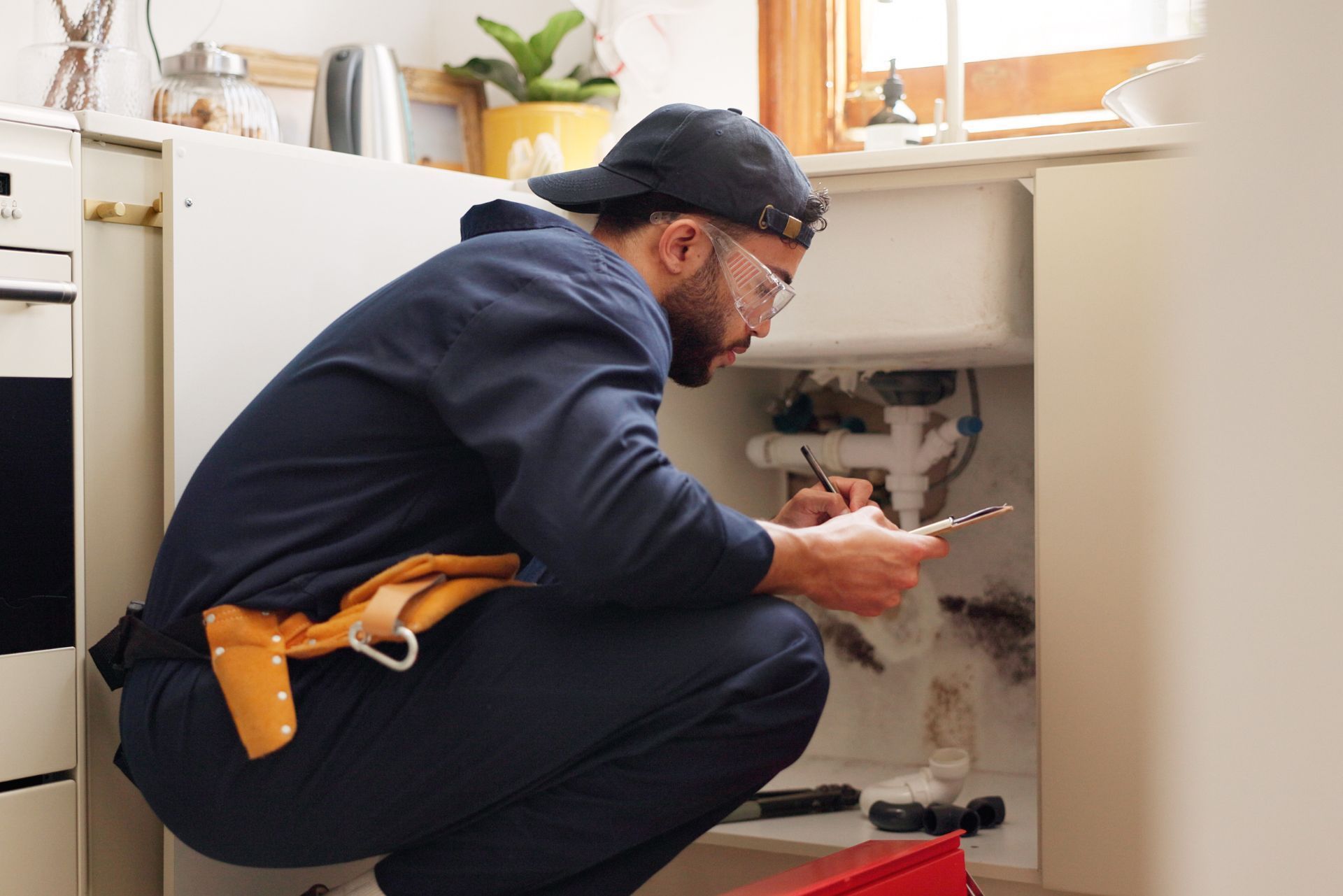Ohio Service and Repair Plumber Insurance

Index
Contact Us
Phone
216-600-2828
Location
100 N. Center Street PO Box 627 LaGrange, OH 44050
One broken pipe in a client’s home can quickly spiral into a costly insurance claim. For plumbers working in Ohio, understanding the nuances of insurance coverage is not just a formality-it’s a necessity. With Ohio experiencing a record-setting 74 tornadoes last year alone, alongside other damaging storms, the risk landscape for property damage claims has never been more complex or costly Dayton Daily News.
Plumbers face unique challenges when it comes to insurance. From water damage claims to liability risks, the right coverage protects both the business and its clients. This article breaks down the essentials of
insurance coverage for Ohio service and repair plumbers, highlighting key costs, risks, and industry insights.
Understanding the Insurance Landscape for Ohio Plumbers
Ohio’s plumbing professionals operate in a state where weather-related incidents and rising insurance costs are reshaping the market. Homeowners insurance rates in Ohio have surged by 36.4% on average from 2019 through 2024, driven in part by the increased frequency of severe weather events Dayton Daily News. This trend impacts plumbers indirectly, as rising claims for water damage and property repairs often involve their services.
Water damage claims alone account for nearly 23% of all property insurance claims annually nationwide, with average payouts around $10,000 per claim ZipDo Education Reports. For plumbers, this means a high likelihood of being involved in significant claims, whether repairing burst pipes or mitigating flood damage. The increasing severity of storms not only heightens the demand for plumbing services but also necessitates that plumbers stay informed about the latest technologies and methods for preventing water damage, such as advanced leak detection systems and eco-friendly plumbing solutions.
Given this environment, insurance policies for plumbers in Ohio must cover a broad spectrum of risks. General liability insurance, workers’ compensation, and specialized coverage for water damage repairs are essential components. Furthermore, with the rise of digital tools and smart home technology, plumbers are also encouraged to consider cyber liability insurance to protect against data breaches, especially if they handle sensitive customer information or utilize cloud-based management systems.
General Liability Insurance: Protecting Against Client Risks
General liability insurance is the cornerstone of any plumbing business’s risk management strategy. In Ohio, plumbers face liability rates ranging from 2.8% to 6.2% of gross revenue for standard coverage limits of $1 million per occurrence and $2 million aggregate ContractorNerd. This insurance protects against third-party claims of bodily injury, property damage, or personal injury that might occur during plumbing work.
For example, if a plumber accidentally causes water damage while repairing a client’s pipe, the general liability policy can cover repair costs and legal fees if a lawsuit arises. Without this coverage, a single incident could threaten the financial stability of the business. Moreover, as customer expectations evolve, many homeowners now seek assurances that their contractors are adequately insured, making general liability coverage not just a safety net but also a competitive advantage in the marketplace.
Workers’ Compensation: Covering Employee Injuries
Ohio requires plumbers to carry workers’ compensation insurance to cover medical expenses and lost wages if employees are injured on the job. The state’s workers’ comp rate for plumbers is $2.14 per $100 of payroll ContractorNerd. This relatively moderate rate reflects the risks associated with plumbing work, such as slips, falls, and exposure to hazardous materials.
Having workers’ compensation coverage not only complies with state law but also protects the business from costly lawsuits related to workplace injuries. It ensures employees receive timely care and supports business continuity by minimizing legal disruptions. Additionally, investing in safety training and ergonomic tools can further reduce the likelihood of injuries, thereby potentially lowering insurance premiums over time. Plumbers who prioritize workplace safety not only protect their workforce but also enhance their reputation as responsible and caring employers in the community.

Water Damage Risks and Their Impact on Plumbing Insurance
Water damage is a significant driver of insurance claims and repair costs in Ohio. Burst pipes alone can result in average repair costs of about $7,000, while flood-related claims often exceed $30,000 WifiTalents. Plumbers are frequently called upon to address these emergencies, which places them at the center of costly insurance claims.
Given the scale of water damage claims, plumbers should consider insurance coverage that specifically addresses the risks associated with water-related repairs. This might include endorsements or specialized liability coverage that protects against faulty workmanship or accidental water damage during service calls.
Additionally, the increasing frequency of severe weather in Ohio, including tornadoes and storms, means that water damage incidents are likely to rise. This trend underscores the importance of comprehensive insurance policies that reflect current reconstruction costs and risks. Homeowners are encouraged to regularly review their policies to ensure they are adequately covered against the evolving nature of these threats, which can vary significantly from year to year.
Moreover, the impact of climate change cannot be overlooked. As weather patterns become more unpredictable, the likelihood of heavy rainfall and subsequent flooding increases, creating a perfect storm for potential plumbing disasters. Homeowners should also be aware of the importance of preventative measures, such as installing sump pumps and maintaining gutters, to mitigate the risk of water damage before it occurs. These proactive steps can not only protect their homes but also reduce the frequency of insurance claims, ultimately benefiting both the homeowner and the plumbing professionals involved.
The Challenge of Underinsurance in Ohio Homes
Two-thirds of homes in the U.S. are underinsured, often because policies do not account for rising reconstruction costs or home improvements Matic. This underinsurance can complicate claims involving plumbers, as homeowners might face gaps in coverage that delay or reduce payouts.
For plumbers, this means that understanding the insurance status of their clients’ properties is important. Recommending or verifying adequate homeowner coverage can prevent disputes and ensure smoother claim processes when water damage or repairs occur. Furthermore, plumbers can play a crucial role in educating homeowners about the specifics of their insurance policies, including what types of water damage are covered and what exclusions might apply. This knowledge can empower homeowners to make informed decisions about their coverage and encourage them to seek additional protection if necessary.
Additionally, the relationship between plumbers and insurance companies is evolving. Many plumbing professionals are now collaborating with insurers to streamline the claims process, providing detailed documentation and reports that can expedite approvals. By fostering these relationships, plumbers not only enhance their service offerings but also position themselves as trusted advisors in the realm of home maintenance and insurance, ultimately benefiting their business in the long run.
Market Trends Affecting Plumbing Insurance in Ohio
The home insurance market is tightening nationwide. From June 2023 to June 2024, the average number of home insurance quotes available per person fell by 27% nationally Matic. This reduction signals a more volatile and selective insurance market, which indirectly influences plumbing businesses that rely on homeowners’ insurance claims for payment.
As insurance options narrow and premiums rise, plumbers may also see changes in their own insurance costs. The interplay between general economic inflation, construction costs, and increased claims frequency pushes premiums higher. Staying informed about these market shifts helps plumbers budget accurately and maintain adequate coverage.
Why Accurate Coverage Matters More Than Ever
Underinsurance is a widespread issue that affects not only homeowners but also the contractors who serve them. Policies that do not reflect current reconstruction costs or recent home improvements leave gaps that can lead to disputes or out-of-pocket expenses.
For plumbing businesses, this means it is crucial to carry insurance that covers the full scope of their work and potential liabilities. It also means advising clients to maintain up-to-date homeowner policies. This proactive approach reduces risk and fosters trust between plumbers and their customers.
Moreover, as the frequency of extreme weather events increases, the likelihood of plumbing emergencies also rises. Homeowners may face issues such as frozen pipes in winter or flooding during heavy rains, leading to a surge in claims. This trend not only puts pressure on insurance companies but also emphasizes the importance of comprehensive coverage for plumbing contractors. By understanding these environmental factors and their implications, plumbers can better prepare for the challenges ahead and ensure they have the necessary protections in place.
In addition, the rise of technology in the plumbing industry, such as smart home systems and advanced diagnostics, is changing the landscape of insurance needs. Plumbers must now consider how these innovations impact their work and the potential liabilities that come with them. For instance, if a smart plumbing system malfunctions, it could lead to significant water damage, raising questions about liability and coverage. Staying abreast of technological advancements and their implications on insurance can help plumbing businesses navigate this evolving market effectively.
Choosing the Right Insurance Coverage for Ohio Plumbers
Plumbing businesses in Ohio should evaluate their insurance needs carefully. Beyond general liability and workers’ compensation, other coverages may be necessary depending on the size and scope of the operation.
Key Coverage Types to Consider
- Professional Liability Insurance: Protects against claims of negligence or errors in service that cause financial loss to clients.
- Commercial Auto Insurance: Covers vehicles used for business purposes, essential for plumbers who travel to multiple job sites daily.
- Equipment Coverage: Protects tools and specialized equipment from theft, damage, or loss.
- Pollution Liability: Important if plumbing work involves handling hazardous materials or waste.
Each plumbing business is unique, so insurance policies should be tailored accordingly. Consulting with an insurance expert familiar with Ohio’s market ensures coverage aligns with specific risks and regulatory requirements. Additionally, understanding the nuances of local laws and regulations can help plumbers avoid potential legal pitfalls that could arise from inadequate coverage.
Balancing Cost and Coverage
Insurance costs for plumbers vary based on revenue, claims history, and coverage limits. Ohio plumbers typically face general liability rates between 2.8% and 6.2% of gross revenue for standard coverage ContractorNerd. Workers’ compensation adds to this cost but is mandatory.
While it might be tempting to opt for minimal coverage to save money, underinsuring can lead to devastating financial consequences. The average water damage claim from a burst pipe is around $7,000, and flood claims can exceed $30,000 WifiTalents. Proper insurance safeguards the business against these risks. Furthermore, investing in comprehensive coverage can enhance a plumber's reputation, as clients often feel more secure knowing their contractor is adequately insured. This peace of mind can lead to increased customer loyalty and referrals, which are invaluable for business growth.
Moreover, Ohio plumbers should also consider the impact of seasonal changes on their operations. For instance, winter months can bring about unique challenges such as frozen pipes and increased emergency calls, which may necessitate additional coverage or higher limits. By anticipating these seasonal risks and adjusting their insurance accordingly, plumbers can ensure they are not caught off guard during peak demand periods. This proactive approach not only protects their financial interests but also reinforces their commitment to providing reliable service to their clients.

What Ohio Plumbers Should Keep in Mind
Insurance is more than just a regulatory box to check. It is a vital tool that protects plumbing businesses from unpredictable and often expensive risks. Ohio’s weather patterns, rising insurance premiums, and the complexity of water damage claims make it essential for plumbers to have comprehensive, up-to-date coverage.
Understanding the local market conditions, such as the 36.4% increase in homeowners insurance rates over recent years and the reduction in available insurance quotes nationally, helps plumbers anticipate challenges and plan accordingly Dayton Daily News, Matic.
Regularly reviewing insurance policies, maintaining clear communication with insurers, and educating clients about their own coverage needs are practical steps plumbers can take to reduce risk and enhance business resilience. Additionally, plumbers should consider the importance of specialized coverage options tailored to their unique needs, such as liability insurance that specifically addresses the risks associated with plumbing work, including injury to workers and damage to property. By investing in these tailored policies, plumbers can ensure that they are adequately protected against the specific challenges they face in their trade.
Moreover, as the plumbing industry continues to evolve with advancements in technology and changes in regulations, staying informed about emerging trends is crucial. For instance, the growing emphasis on eco-friendly plumbing solutions and water conservation practices not only aligns with consumer preferences but may also open up new avenues for insurance discounts. Plumbers who adopt sustainable practices and invest in training on the latest technologies can position themselves as leaders in the field, potentially attracting more clients while also benefiting from favorable insurance terms. This proactive approach not only safeguards their business but also enhances their reputation in the community.
Frequently Asked Questions
Q: What types of insurance are mandatory for plumbers in Ohio?
A: Workers’ compensation insurance is required by law. General liability insurance is not mandatory but highly recommended to protect against client claims.
Q: How much does general liability insurance typically cost for Ohio plumbers?
Costs range from about 2.8% to 6.2% of gross revenue for standard $1 million/$2 million coverage limits.
Q: Why is water damage a significant concern for plumbers?
Water damage claims make up nearly 23% of property insurance claims, with average costs around $10,000. Plumbers often handle repairs related to these claims.
Q: How can underinsurance affect plumbing claims?
If a homeowner’s insurance policy doesn’t reflect current reconstruction costs, claims may be denied or underpaid, complicating repair work and payments.
Q: Are there specialized insurance coverages plumbers should consider?
Yes. Professional liability, commercial auto, equipment coverage, and pollution liability may be necessary depending on the business size and services offered.
Q: How has the insurance market changed recently for plumbers?
The number of home insurance quotes available nationally fell by 27% from June 2023 to June 2024, indicating a tighter market and rising premiums.
Q: What is the average cost to repair water damage from a burst pipe?
It typically costs around $7,000 to repair water damage caused by a burst pipe.


